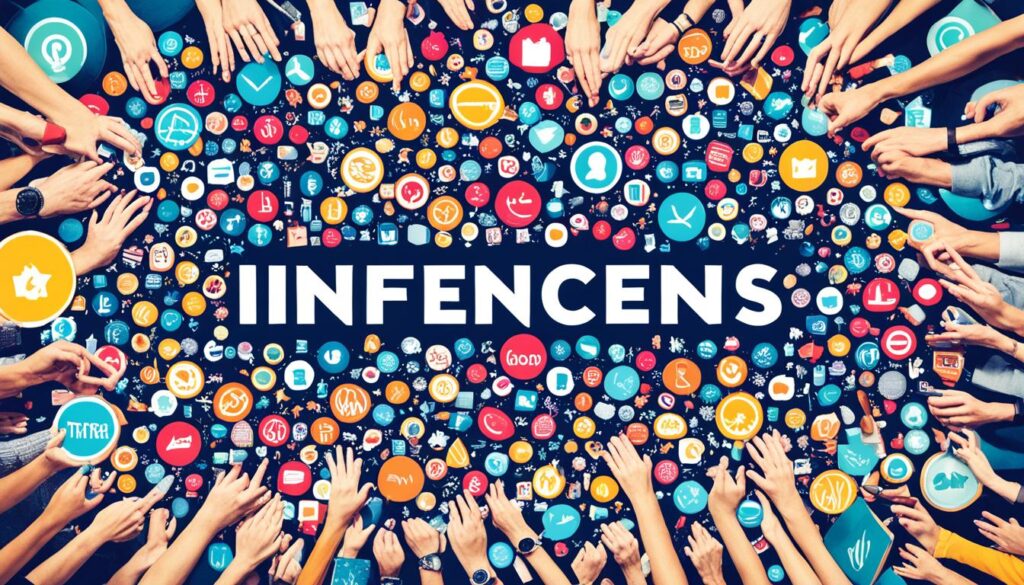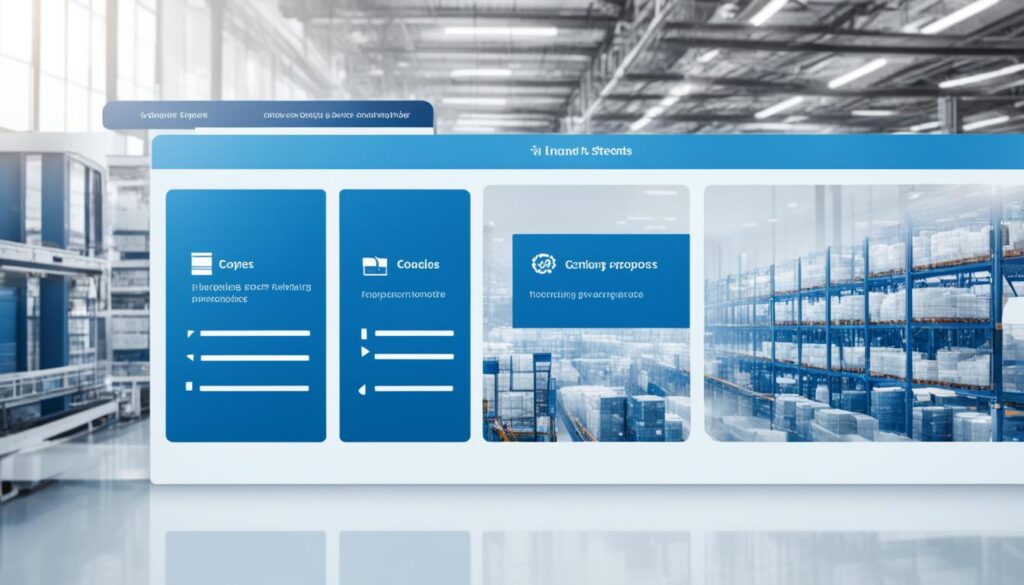How can public relations strategies help shape and enhance your brand reputation? Is effective communication planning the key to successful stakeholder engagement? Discover the essential practices that can maximize your impact in public relations.
Key Takeaways:
- Building strong relationships with key stakeholders is crucial for successful public relations.
- Formulating clear and consistent messages that resonate with your audience is essential in public relations.
- Developing an integrated PR strategy helps in identifying the most effective channels for communication.
- Utilizing digital and social media platforms can significantly enhance your PR efforts.
- Monitoring media relations and analyzing feedback are critical for measuring the impact of your PR campaigns.
Build Relationships with Key Stakeholders
Building strong relationships is at the core of successful public relations. In order to effectively manage your organization’s reputation and achieve your communication goals, it is essential to cultivate meaningful connections with key stakeholders. By prioritizing relationships, you can foster mutual understanding, trust, and collaboration.
One key aspect of building relationships is maintaining open lines of communication. Regularly engage with your stakeholders through various channels, such as email newsletters, social media platforms, and face-to-face meetings. This allows you to share important updates, address concerns, and gather valuable feedback. Additionally, being proactive in seeking input from stakeholders demonstrates your commitment to their perspectives and builds a sense of inclusiveness.
Transparency is another crucial element in relationship-building. Share relevant information openly and honestly, even if it may not always be favorable. By being transparent, you establish credibility and foster trust with your stakeholders, which can lead to long-term loyalty and support.
Trust is the cornerstone of any successful relationship. It takes time to build trust, but it can be easily eroded. Consistently deliver on your promises, be reliable, and demonstrate integrity in all your interactions. Trust is the foundation on which strong relationships are built, and it is essential for effective stakeholder engagement.
“The success of any organization depends on the relationships it builds and maintains with its stakeholders. Effective public relations professionals understand the importance of communication, transparency, and trust in nurturing these relationships.” – Jane Adams, PR Consultant
Fostering Relationships with Stakeholders
When it comes to building relationships with stakeholders, it’s important to adopt a public-centric approach. Put yourself in their shoes and strive to understand their needs, concerns, and aspirations. By actively listening and responding to their feedback, you can build credibility and strengthen your relationships.
Stakeholder engagement should also go beyond just communication. Actively involve your stakeholders in decision-making processes and seek their input when developing strategies or initiatives. This collaborative approach demonstrates that you value their contributions and opinions, and it can lead to a stronger sense of ownership and support for your organization.
Remember that relationships are built over time and require ongoing effort and nurturing. Consistently invest in maintaining relationships with stakeholders and adapt your communication strategies as their needs evolve.
| Benefits of Strong Stakeholder Relationships | Actions for Relationship Building |
|---|---|
| Increased trust and loyalty | Regularly communicate updates, news, and successes |
| Enhanced reputation and credibility | Seek and respond to stakeholder feedback |
| Collaborative partnerships and support | Actively involve stakeholders in decision-making processes |
| Positive word-of-mouth and referrals | Be transparent and honest in all communications |

By prioritizing relationships, communication, transparency, and trust, you can build strong connections with your key stakeholders. These relationships will not only benefit your organization’s reputation but also contribute to its long-term success.
Formulate Effective Messages
In order to have a successful public relations strategy, it is crucial to formulate effective messages that resonate with your target audience. By understanding the best PR practices, you can create messages that accurately represent your brand and products, ultimately building a positive reputation for your business.
When crafting messages, it is important to consider the specific needs, wants, and desires of your audience. By delivering targeted messages that address these factors, you can establish a strong connection with your audience and effectively communicate your brand’s values and offerings.
Clear and consistent messaging is key. By ensuring that all your communication materials, such as press releases and social media posts, convey the same core messages, you can establish a strong and recognizable brand identity. This not only helps in creating a cohesive brand image but also makes it easier for your audience to understand and remember your key messages.
Moreover, incorporating storytelling techniques into your messages can make them more engaging and memorable. By telling stories that capture the essence of your brand and products, you can create an emotional connection with your audience, leading to increased brand loyalty and advocacy.
“The power of a well-crafted message is undeniable. By formulating messages that effectively communicate your brand’s values and offerings, you can build trust, credibility, and loyalty with your target audience.”
– PR Expert
Key Elements of Effective Messages
- Clarity: Your message should be clear, concise, and easy to understand. Avoid jargon or complex language that can confuse your audience.
- Relevance: Tailor your messages to the specific interests and needs of your audience. Show them how your brand and products can address their pain points or provide solutions.
- Consistency: Ensure that your messages align with your brand’s core values and overall communication strategy. Consistency reinforces your brand identity and helps build trust.
- Emotion: Use storytelling techniques to evoke emotions and create a personal connection with your audience. Emotionally resonant messages are more likely to be remembered and shared.
Remember, your messages play a crucial role in shaping how your brand is perceived by the public. By formulating effective messages that align with PR best practices, you can strengthen your brand’s reputation, enhance audience engagement, and drive positive business outcomes.

Develop an Integrated PR Strategy
When it comes to public relations, developing an integrated strategy is key to effectively communicate with your stakeholders. By identifying the right channels to convey your message, you can maximize the impact of your PR campaigns and establish strong relationships with your target audience.
Choosing the Right Channels
Every audience is unique and responds differently to various channels. To ensure the success of your PR campaigns, it’s crucial to choose the most effective channels that resonate with your target audience. Consider utilizing a mix of traditional media outlets, such as newspapers and television, as well as digital platforms like social media and online publications.
An integrated PR strategy allows you to reach your audience through multiple channels, providing them with the information they need to engage with your brand. By strategically selecting the appropriate channels, you can effectively deliver your message and drive customer engagement.
The Power of Social Media Integration
In today’s digital landscape, social media has become an indispensable tool for PR professionals. Integrating social media platforms into your PR strategy can help enhance customer relationships, build brand loyalty, and increase your reach.
Through social media, you can engage with your audience in real-time, share valuable content, and receive instant feedback. This immediate connection strengthens your brand’s presence and allows you to address any concerns or inquiries promptly.
Additionally, social media platforms provide valuable insights and analytics that enable you to measure the effectiveness of your campaigns. You can track engagement, monitor sentiment, and adjust your strategy accordingly to maximize your PR impact.
Channels Comparison
| Channel | Benefits |
|---|---|
| Traditional Media |
|
| Social Media |
|
| Online Publications |
|

An integrated PR strategy allows you to leverage the strengths of each channel and amplify your message effectively. By utilizing a combination of traditional media, social media, and online publications, you can reach a wider audience and achieve your communication goals.
Utilize Digital and Social Media
In today’s digital age, utilizing digital and social media platforms is essential for any successful public relations (PR) campaign. These channels provide PR professionals with the opportunity to reach a wider audience, engage with them effectively, and build strong relationships. Incorporating social media into PR campaigns can lead to better customer relationships, increased brand awareness, and enhanced brand loyalty.
When it comes to digital media, PR professionals can leverage various online platforms such as websites, blogs, and online publications to disseminate information about their brand, products, or services. These channels allow for greater control over the messaging and provide an avenue for storytelling to captivate the audience.

Social media platforms, on the other hand, offer a unique opportunity to connect and interact directly with the target audience. Through platforms like Facebook, Instagram, Twitter, and LinkedIn, PR professionals can share updates, news, and content, stimulating engagement and fostering a sense of community. By actively participating in conversations, answering questions, and responding to feedback, brands can establish a strong online presence and build trust with their audience.
“Social media is not just an activity; it is an investment of valuable time and resources. Surround yourself with people who not just support you and stay with you, but inform your thinking about ways to WOW your online presence” – Sean Gardner
Advantages of digital and social media in PR campaigns
- Wider Reach: Digital and social media platforms provide unparalleled access to a global audience, allowing brands to extend their reach and influence beyond geographical barriers.
- Real-Time Engagement: By leveraging digital and social media, PR professionals can engage with their audience in real time, responding to inquiries, addressing concerns, and fostering meaningful conversations.
- Targeted Messaging: These platforms enable precise targeting, ensuring that the right message reaches the right audience at the right time, increasing the chances of resonating with them.
- Viral Potential: With the capacity to share content quickly and easily, digital and social media have the potential to make campaigns go viral, exponentially increasing brand visibility and awareness.
- Data-driven Insights: The analytics provided by digital and social media platforms offer valuable insights into audience behavior, preferences, and engagement, enabling PR professionals to make data-driven decisions and continuously optimize their campaigns.
Incorporating digital and social media into PR campaigns has become an indispensable practice for brands aiming to maximize their impact. Through strategic planning, consistent messaging, and active engagement with the digital audience, PR professionals can effectively build brand reputation, raise awareness, and foster enduring relationships.
Monitor Media Relations
As part of successful public relations strategies, monitoring media relations is essential for assessing the impact of your efforts. By understanding how your content resonates with the target audience, you can gather valuable insights and make data-driven decisions to enhance your PR strategy. Through diligent monitoring, feedback analysis, and data assessment, you can ensure that your media relations efforts are effective and yield the desired results.
Monitoring media relations involves analyzing various metrics, such as media coverage, social media engagement, website traffic, and customer feedback. By closely tracking these metrics, you can gain a comprehensive understanding of your brand’s reputation, visibility, and overall reach. This data provides invaluable insights into the success of your PR campaigns and allows you to make informed adjustments to optimize your strategies.
Feedback analysis plays a vital role in monitoring media relations. By actively listening to the responses, comments, and reviews from your target audience, you can gauge their perception of your brand and identify areas for improvement. This feedback serves as a wealth of information that can guide your PR efforts and ensure they align with the expectations and preferences of your audience.
It is not enough to simply create and distribute content. Monitoring media relations allows you to listen, learn, and adapt to the changing needs of your audience, ultimately driving the success of your PR initiatives.
To effectively monitor media relations, consider utilizing data analysis tools that provide comprehensive insights and real-time feedback. These tools can help you track media mentions, sentiment analysis, audience demographics, and engagement rates. By harnessing the power of data analysis, you can measure the success of your media relations efforts and identify areas of improvement.
Key Metrics for Media Relations Monitoring
| Metric | Description |
|---|---|
| Media Coverage | Quantify the number of media outlets that have featured your brand or campaign. |
| Social Media Engagement | Measure the level of audience interaction, including likes, comments, shares, and mentions. |
| Website Traffic | Analyze the number of visitors to your website through various PR channels. |
| Customer Feedback | Assess customer satisfaction, reviews, and testimonials to understand their perception of your brand. |
By continually monitoring media relations, you can stay ahead of evolving trends and dynamics in the PR landscape. This proactive approach not only helps you identify potential challenges but also enables you to seize opportunities and maintain a strong brand reputation.
Cooperate with Influencers
In today’s digital age, influencers play a significant role in shaping public opinion and driving engagement. Collaborating with influencers can be a powerful strategy in public relations, allowing you to expand your reach and tap into new audiences. By leveraging the credibility and influence of these individuals, you can enhance your brand’s reputation and gain valuable exposure.
Influencers are individuals who have established a loyal following and possess expertise or influence in specific areas or industries. They have built trust with their audience, making their recommendations and endorsements highly influential. Partnering with influencers allows you to leverage their reach and connect with their dedicated followers, who are more likely to trust and engage with the content they promote.
When collaborating with influencers, it is important to focus on creating genuine partnerships rather than simply endorsing your brand or products. Building authentic relationships with influencers will not only benefit your PR efforts but also contribute to long-term brand growth and customer loyalty.
Here are some key benefits of collaborating with influencers:
- Increased Brand Exposure: By partnering with influencers, you expose your brand to a wider audience that may not have been reachable through traditional PR efforts alone.
- Enhanced Credibility: Influencers hold sway over their followers, creating a sense of trust and credibility. When an influencer endorses your brand or product, it lends authenticity and credibility to your messaging.
- Access to Niche Audiences: Influencers often have a strong following within specific niches or industries. By collaborating with influencers in your target market, you can gain access to highly engaged audiences that align with your brand’s offerings.
- Content Creation: Many influencers have honed their content creation skills, producing high-quality and engaging content. Partnering with influencers can provide you with unique and creative content that can be leveraged across your PR campaigns.
“Influencers have become a force to be reckoned with in the world of public relations. By building collaborative partnerships, you can harness the power of their influence to drive brand awareness and engagement.”
When identifying influencers to collaborate with, it is important to consider individuals whose values and target audience align with your brand. They should have a genuine interest in your industry or product and possess a strong presence on relevant social media platforms or other channels.
Building relationships with influencers requires a strategic approach:
- Research and Identify: Conduct thorough research to identify influencers who align with your brand values and target audience. Look for individuals who have an authentic voice, engage regularly with their followers, and demonstrate an understanding of your industry.
- Engage and Connect: Once you have identified potential influencers, engage with their content by leaving meaningful comments and sharing their posts. This will help establish a connection and show your genuine interest in their work.
- Create Collaborative Opportunities: Propose mutually beneficial collaborations to influencers, such as sponsored content, product reviews, or joint campaigns. Highlight the value they can bring to their audience through the collaboration.
- Nurture Long-Term Relationships: Continuously nurture relationships with influencers by staying engaged and providing ongoing support. Collaborate on multiple projects to build a strong partnership based on trust and mutual benefit.
An example of a successful influencer collaboration is the partnership between renowned fitness influencer Kayla Itsines and fitness brand Sweat. Kayla’s expertise and influence in the fitness industry have allowed Sweat to reach a broader audience and establish itself as a trusted brand in the fitness space.
The key to successful influencer collaborations is to approach the collaboration as a partnership rather than a one-off transaction. By building genuine relationships and aligning your brand with influencers who share your values and target audience, you can effectively harness the power of influencers to enhance your public relations efforts.
By capitalizing on the credibility and reach of influencers, you can elevate your brand’s visibility, build trust with your target audience, and drive meaningful engagement for your PR campaigns. Collaborating with influencers is a valuable strategy in public relations that can yield significant results for your brand.

Produce Relevant and Engaging Content
As a public relations professional, one of your top priorities is to produce content that is both relevant and engaging to your target audience. By doing so, you can establish a strong connection with your audience and keep them interested in your brand or organization.
When creating content, it’s essential to tailor it to the specific needs and interests of your audience. This means understanding their pain points, desires, and preferences. By addressing these aspects, you can provide valuable information that resonates with them and delivers genuine value.
Relevance is key in ensuring that your content is not only interesting but also valuable to your audience. It should directly address their challenges, answer their questions, or provide valuable insights. This way, you position yourself as an expert in your industry and gain their trust.
To engage your audience effectively, consider using various formats and channels. Text-based content such as blog posts, articles, or whitepapers can provide in-depth information and analysis. Additionally, engaging visuals such as infographics or videos can grab attention and deliver information in a more visually appealing way.
Quotes or testimonials from satisfied customers or industry experts can also add credibility to your content. Incorporating storytelling techniques can make your content more relatable and emotionally impactful.
Remember, the key to producing relevant and engaging content is to understand your audience’s needs and interests. By addressing their pain points, providing valuable insights, and using various formats and channels, you can create content that truly resonates with them. This, in turn, will help you build trust, establish your brand as an industry authority, and drive engagement with your target audience.
Furthermore, regularly monitoring the performance of your content can provide valuable insights into what resonates with your audience and what doesn’t. Analyzing metrics such as website traffic, social media engagement, or click-through rates can help you refine your content strategy and deliver even more valuable content in the future.
Measure the Impact of Your Efforts
The success of your public relations strategies depends on your ability to measure their impact. Applying rigorous impact measurement techniques allows you to gain valuable insights into the effectiveness of your PR efforts. By analyzing data and feedback, you can identify what aspects of your strategies are working well and what areas need adjustment, enabling you to refine your PR strategy for maximum impact.
One of the key components of impact measurement is data analysis. By examining relevant data, such as website traffic, engagement metrics, and media mentions, you can determine the reach and influence of your PR initiatives. This analysis helps you understand which tactics are resonating with your target audience and driving desired outcomes. With this insight, you can optimize your future PR campaigns to achieve even better results.
Another critical aspect of impact measurement is strategy adjustment. By reviewing the data and feedback, you can identify any gaps or weaknesses in your current PR strategy. Whether it’s adjusting messaging, targeting different channels, or reallocating resources, making strategic adjustments based on your analysis ensures that your efforts are aligned with your goals. It allows you to stay agile and responsive in a rapidly evolving media landscape.
Ultimately, measuring the impact of your PR efforts is essential for maximizing the effectiveness of your public relations initiatives. It allows you to make evidence-based decisions, mitigate risks, and capitalize on opportunities. By consistently analyzing data, adjusting your strategy, and monitoring the outcomes of your PR campaigns, you can continuously improve your results and build a strong brand reputation in the eyes of your key stakeholders.
FAQ
What is the importance of public relations in marketing and branding?
How can I build strong relationships with key stakeholders in public relations?
How can I formulate clear and consistent messages for my audience in public relations?
How can I develop an integrated PR strategy?
How can I effectively utilize digital and social media platforms in public relations?
Why is monitoring media relations important in public relations?
How can I collaborate with influencers in public relations?
How can I create relevant and engaging content in public relations?
Why is it important to measure the impact of public relations efforts?
Source Links
- https://www.linkedin.com/pulse/10-essential-practices-follow-public-relations-your-koudaktzian
- https://www.linkedin.com/pulse/power-public-relations-digital-age-maximizing-your-brands-hasan
- https://www.agilitypr.com/pr-news/public-relations/10-tips-to-maximize-the-impact-of-soft-skills-training-for-pr-professionals/






